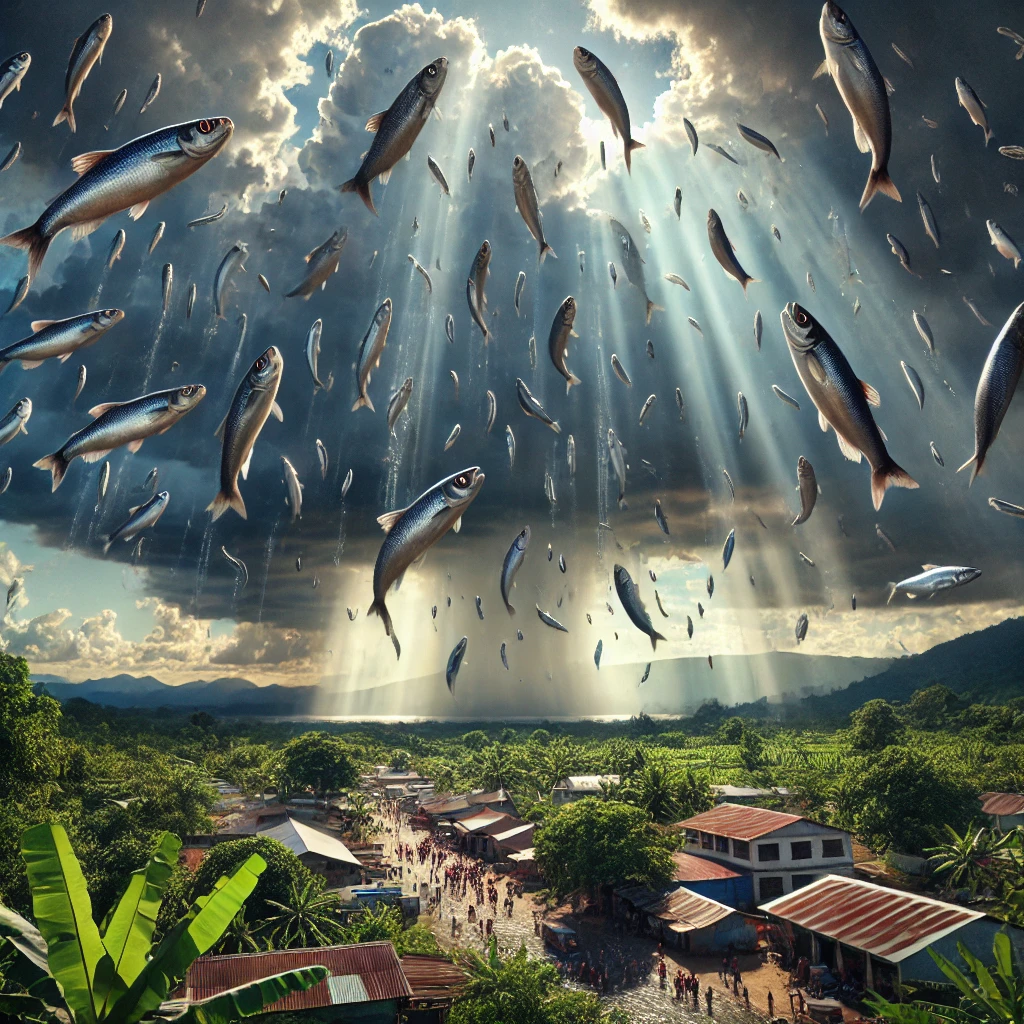The phenomenon of fish rain: Unraveling nature’s rare meteorological mystery
Many mysterious phenomena occur in the world, often prompting varied interpretations. Some people view them through a religious lens, while others seek scientific explanations.
One of the most fascinating and long-discussed phenomena around the globe is the claim that fish can fall from the sky like rain. Although it may sound like a plot from a movie or a work of pure imagination, there are well-documented instances of this happening, complete with in-depth explanations.
In various parts of the world including Yoro in Honduras, Sri Lanka, India, and Australia,there have been extraordinary events where residents were amazed to witness fish falling to the ground in a manner that closely resembles rainfall.

In these occurrences, witnesses have reported finding fresh fish sometimes still alive on the ground, sparking widespread curiosity as to how fish could be lifted from water, carried into the sky, and returned to earth like raindrops.
In Yoro, Honduras, this phenomenon has even become a celebrated annual event known as La Lluvia de Peces, or “The Rain of Fish.” Every year between May and June, locals claim that, usually during nighttime or early morning hours, fish mysteriously fall from the sky.
What’s particularly astonishing is that the fish are small and often belong to species not native to the immediate area, reinforcing the belief that they originated from distant sources. The event has taken on cultural and spiritual significance, with many linking it to a 19th-century Catholic missionary, Father José Manuel Subirana. Local legend holds that he prayed for the people to receive food, and God responded by sending down fish from the sky.
While locals may interpret this event as a divine miracle, meteorologists and atmospheric scientists have offered evidence-based explanations grounded in weather science.
These rare occurrences are often caused by extremely powerful wind systems such as waterspouts or tornadoes that form over bodies of water. These vortexes can suck up water along with whatever is in it, including fish and carry them high into the atmosphere. When the winds weaken or reach land, the lifted objects are released, falling to the ground just like raindrops.

This sudden and unpredictable process explains how fish can appear in areas far from any body of water.
Countries like Sri Lanka, Thailand, and India’s Kerala State have also reported such bizarre fish rains. These events prompted investigations by scientific institutions, which released reports attributing the occurrences to wind activity and climate anomalies.
Though rare, these events are considered meteorologically possible. Agencies like the U.S. National Weather Service confirm that such phenomena can be explained by natural atmospheric forces, even if they seem miraculous at first glance.
For instance, in 2010 in Lajamanu, Australia, residents reported a fish rain, and photographs were taken showing fish falling from the sky some reportedly still alive. Local authorities noted that the fish species found were not native to the area, supporting the theory that they had been lifted from a distant lake by strong winds.
In some regions, people interpret these events as signs from God or spiritual gifts. However, scientific communities emphasize the role of natural forces, such as wind systems coming from small lakes.

All of this underscores the mystery and wonder of our planet, but also the importance of science-based explanation. While many view a fish rain as a heavenly message, research reminds us that nature’s wonders often have explanations rooted in meteorology and atmospheric science.
Such events are a powerful reminder of why we must continue investing in scientific research, education, and explanatory journalism—to deepen public understanding of our environment.
A fish rain is indeed a rare and striking event. But more than a supernatural sign, it offers insight into the complex and surprising behavior of nature, encouraging us to learn more about the wind systems and climate changes that make such wonders possible.

